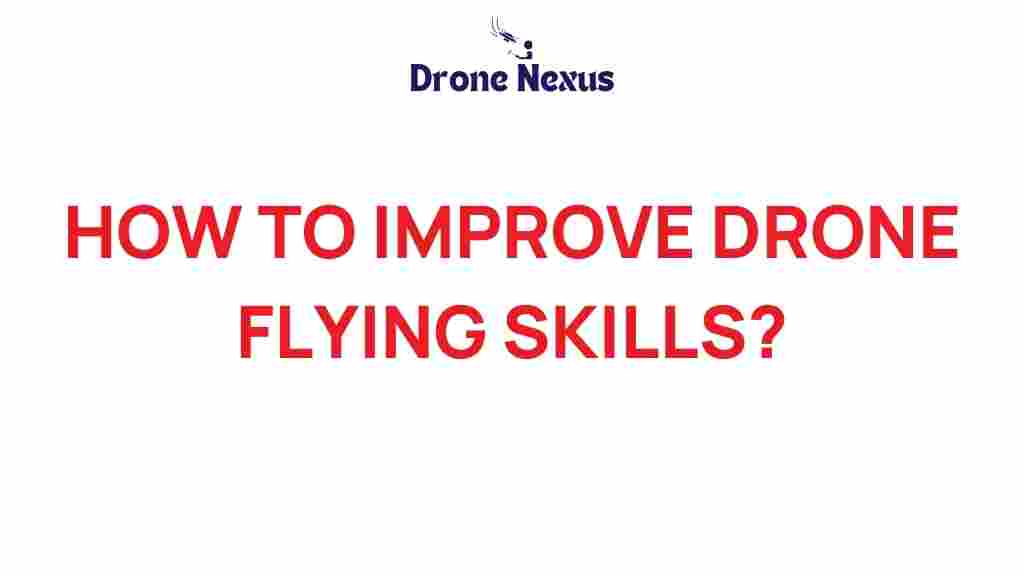Drone Flying Skills: Mastering the Art of Aerial Navigation
In recent years, drone technology has proliferated, leading to an increase in interest among hobbyists and professionals alike. Whether you’re capturing stunning aerial footage, conducting inspections, or simply enjoying the thrill of flying, enhancing your drone flying skills is essential for a safe and enjoyable experience. This comprehensive guide will provide you with proven techniques to elevate your drone flying abilities, ensuring you become a proficient pilot.
Understanding the Basics of Drone Flying
Before diving into advanced techniques, it’s crucial to grasp the fundamentals of drone flying. Familiarizing yourself with the components of your drone and how they operate can significantly enhance your drone flying skills.
Key Components of a Drone
- Frame: The structure that holds all the components together.
- Motors: Responsible for propelling the drone.
- Propellers: Generate lift and control the drone’s movement.
- Flight Controller: The brain of the drone, managing inputs from the pilot and sensors.
- Batteries: Provide power to the drone.
- Remote Control: Used by the pilot to navigate the drone.
Understanding these components will help you troubleshoot issues and maintain your drone effectively.
Step-by-Step Process to Enhance Your Drone Flying Skills
Now that you have a grasp of the basics, let’s explore a step-by-step approach to enhance your drone flying skills.
1. Start with a Simulator
Flight simulators are an excellent way to practice without the risk of damaging your drone. These programs replicate the flying experience, allowing you to learn the controls and maneuvers in a virtual environment.
- Look for reputable flight simulators that offer realistic physics.
- Practice various scenarios, including takeoffs, landings, and emergency maneuvers.
2. Master the Controls
Familiarize yourself with the remote control layout and functions. Understanding how to control altitude, direction, and speed is fundamental to improving your drone flying skills.
- Throttle: Controls the altitude of your drone.
- Yaw: Rotates the drone left or right.
- Pitch: Tilts the drone forward or backward.
- Roll: Tilts the drone left or right.
Take time to practice each control in isolation to build muscle memory.
3. Practice in Open Spaces
Once you feel comfortable with the controls in a simulator, it’s time to take your drone outdoors. Choose a wide-open space away from people and obstacles to practice flying.
- Start with basic maneuvers like hovering, ascending, and descending.
- Gradually introduce more complex movements, such as turns and figure eights.
4. Learn to Use the Camera
If your drone has a camera, practice capturing images and videos. Understanding how to frame shots and adjust settings can significantly enhance your aerial photography skills.
- Experiment with different angles and altitudes.
- Learn about exposure, focus, and lighting conditions.
5. Join a Drone Community
Connecting with other drone enthusiasts can provide invaluable insights and tips. Consider joining local clubs or online forums where you can share experiences and learn from others.
Find a local drone club to meet fellow enthusiasts and practice together.
Troubleshooting Common Drone Flying Issues
No matter how skilled you become, you may encounter challenges while flying your drone. Here are some common issues and solutions to improve your drone flying skills.
1. Drone Won’t Take Off
If your drone refuses to take off, check the following:
- Ensure the battery is fully charged.
- Verify that the propellers are properly installed.
- Check for any firmware updates that may be needed.
2. Unstable Flight
An unstable flight can result from several issues:
- Ensure that the drone is calibrated before each flight.
- Check for damage to the propellers or motors.
- Fly in calm weather to avoid strong winds affecting stability.
3. Lost Connection
If you lose connection with your drone, follow these steps:
- Stay calm and avoid sudden movements.
- Check the distance; most drones have a maximum range.
- Consider flying with a spotter who can help keep an eye on the drone.
Advanced Techniques for Experienced Pilots
Once you’ve mastered the basics, you can explore advanced techniques to further enhance your drone flying skills.
1. Mastering Aerial Maneuvers
Advanced maneuvers like flips, rolls, and dives can add flair to your flying. Practice these techniques in a safe environment and gradually increase complexity.
2. Understanding Flight Modes
Many drones come with various flight modes, including:
- Stabilize Mode: Ideal for beginners, it helps maintain level flight.
- Altitude Hold Mode: Maintains the drone’s altitude automatically.
- Manual Mode: Offers complete control, but requires advanced skills.
Experiment with different modes to find what suits your flying style.
3. Night Flying
Flying at night can be a thrilling experience, but it requires additional skills and precautions:
- Ensure your drone has adequate lighting.
- Familiarize yourself with the area during daylight.
- Practice maintaining orientation in low visibility.
Conclusion: Elevate Your Drone Flying Skills
Improving your drone flying skills takes time, practice, and dedication. By following the techniques outlined in this guide, you can become a proficient pilot capable of executing aerial maneuvers with confidence. Remember to practice regularly, stay informed about the latest drone technologies and regulations, and engage with the drone flying community to share experiences and tips. The sky is the limit—embrace the journey of mastering the skies!
For more tips and resources on drone flying, check out this comprehensive guide to drone photography and videography.
This article is in the category Applications and created by DroneNexus Team
